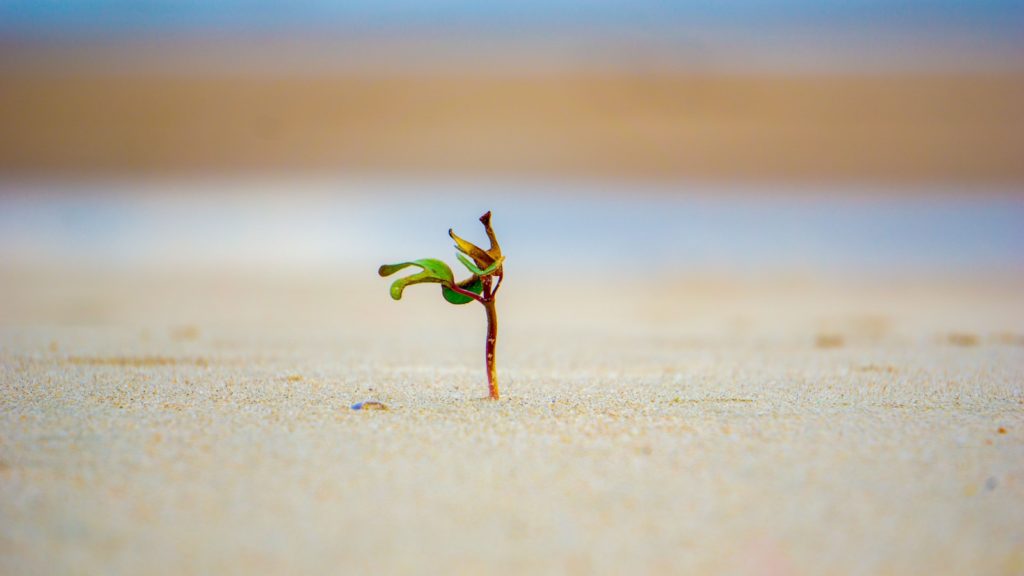BUILD A SANDCASTLE
A young child spends the day on the beach and receives advice on how to build the perfect sandcastle. The child is first encouraged to ask a friend to help. The pair then builds a solid base by forming a crater in a sand hill and packing it down. The book offers different options for building, such as two different methods to form castle towers (“stack soupy pancakes” or use “buckets and forms”). Once the castle is complete, the author suggests various tips for landscaping, decorating, and moat-building. The main text is written in verse with an AABB rhyme scheme. (The text occasionally visually reflects its own meaning—each word of the phrase “hip hip hooray” is bigger than the last, for example). Each page features a box with (nonrhyming) tips from a starfish, like first testing the sand to determine whether it’s a suitable spot for building: “Scoop up a handful of damp sand, squeeze it tightly, and then open your hand. If the sand ball stays together, you’ve found a good place. If it falls apart, keep hunting.” A helpful checklist ensures readers will have everything they need for their own beach day. Musil’s artwork features adorable, brightly colored fabric pieces arranged to depict the two children interacting with both their surroundings and various little sea creatures (including a crab taking a picture of their completed sandcastle). The story itself is fun in its musical rhythm (“Grab a pail. A tube works, too. / (Any hollow form will do.)”) and informative—in addition to building suggestions, the starfish tips provide further relevant information, like facts about sand and advice about avoiding damaging sea turtles’ nests while creating castles). Meyer has crafted a charming and joyous celebration of friendship, artistry, and nature in a surprisingly small package that is a true delight to read.


A young child spends the day on the beach and receives advice on how to build the perfect sandcastle. The child is first encouraged to ask a friend to help. The pair then builds a solid base by forming a crater in a sand hill and packing it down. The book offers different options for building, such as two different methods to form castle towers (“stack soupy pancakes” or use “buckets and forms”). Once the castle is complete, the author suggests various tips for landscaping, decorating, and moat-building. The main text is written in verse with an AABB rhyme scheme. (The text occasionally visually reflects its own meaning—each word of the phrase “hip hip hooray” is bigger than the last, for example). Each page features a box with (nonrhyming) tips from a starfish, like first testing the sand to determine whether it’s a suitable spot for building: “Scoop up a handful of damp sand, squeeze it tightly, and then open your hand. If the sand ball stays together, you’ve found a good place. If it falls apart, keep hunting.” A helpful checklist ensures readers will have everything they need for their own beach day. Musil’s artwork features adorable, brightly colored fabric pieces arranged to depict the two children interacting with both their surroundings and various little sea creatures (including a crab taking a picture of their completed sandcastle). The story itself is fun in its musical rhythm (“Grab a pail. A tube works, too. / (Any hollow form will do.)”) and informative—in addition to building suggestions, the starfish tips provide further relevant information, like facts about sand and advice about avoiding damaging sea turtles’ nests while creating castles). Meyer has crafted a charming and joyous celebration of friendship, artistry, and nature in a surprisingly small package that is a true delight to read.






















































![The 11 Best Landing Page Builder Software Tools [2025]](https://www.growthmarketingpro.com/wp-content/uploads/2024/04/best-landing-page-software-hero-image-1024x618.png?#)
































![Local SEO: How To Make More Customers Click, Choose & Walk Through Your Doors [Webinar] via @sejournal, @hethr_campbell](https://www.searchenginejournal.com/wp-content/uploads/2025/04/featured-596.png)
![How to Calculate Market Share [Formula + Guide]](https://static.semrush.com/blog/uploads/media/73/24/7324b52285631748eef82763664acf82/calculate-market-share-sm.png)







![What Is Generative Engine Optimization [Tips & Workflows To Do It]](https://moz.com/images/blog/banners/What-Is-Generative-Engine-Optimization-Tips-Workflows-To-Do-It-1.png?auto=compress,format&fit=crop&dm=1745607929&s=6f75f1f02c531af0f80acb12517c8bab#)










![The best social media platforms for video content in 2025 [consumer data]](https://www.hubspot.com/hubfs/Untitled%20design%20-%202024-09-13T190325.614.png)






































.jpg)
